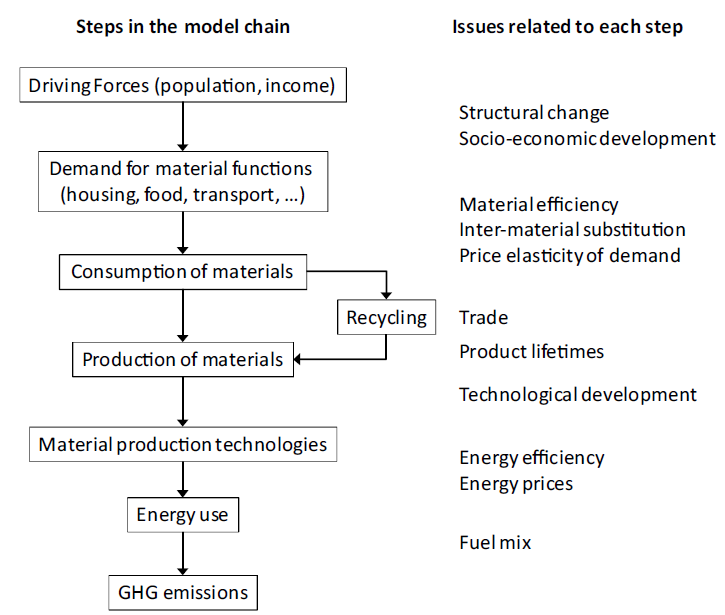Industrial sector - IMAGE
Jump to navigation
Jump to search
| Corresponding documentation | |
|---|---|
| Previous versions | |
| Model information | |
| Model link | |
| Institution | PBL Netherlands Environmental Assessment Agency (PBL), Netherlands, https://www.pbl.nl/en. |
| Solution concept | Partial equilibrium (price elastic demand) |
| Solution method | Simulation |
| Anticipation | Simulation modelling framework, without foresight. However, a simplified version of the energy/climate part of the model (called FAIR) can be run prior to running the framework to obtain data for climate policy simulations. |
The heavy industry submodule was included for the steel and cement sectorsIMG_vanRuijven_2016. These two sectors represented about 8% of global energy use and 13% of global anthropogenic greenhouse gas emissions in 2005. The generic structure of the energy demand module was adapted as follows:
- Activity is described in terms of production of tonnes cement and steel. The regional demand for these commodities is determined by a relationship similar to the formulation of the structural change discussed in the demand section. Both cement and steel can be traded but this is less important for cement. Historically, trade patterns have been prescribed but future production is assumed to shift slowly to producers with the lowest costs.
- The demand after trade can be met from production that uses a mix of technologies. Each technology is characterised by costs and energy use per unit of production, both of which decline slowly over time. The actual mix of technologies used to produce steel and cement in the model is derived from a multinominal logit equation, and results in a larger market share for the technologies with the lowest costs. The autonomous improvement of these technologies leads to an autonomous increase in energy efficiency. The selection of technologies represents the price induced improvement in energy efficiency. Fuel substitution is partly determined on the basis of price, but also depends on the type of technology because some technologies can only use specific energy carriers (e.g., electricity for electric arc furnaces).
An overview of the heavy industry model structure is provided in <xr id="fig:Industry_IMG"/>.
<figure id="fig:Industry_IMG">
</figure>
